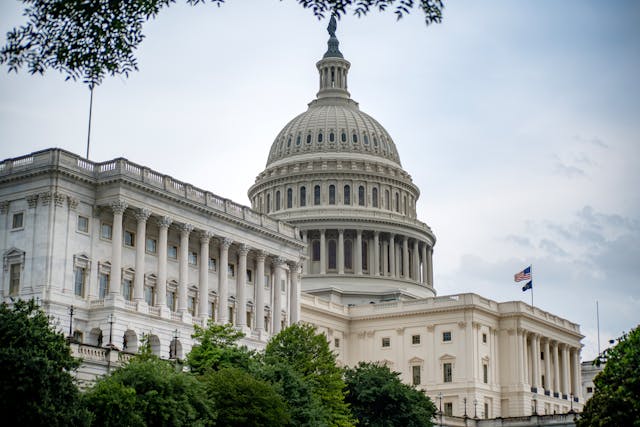Last updated: July 2025
Written by: Sanjin Hadziomerovic
The House of Representatives has approved President Trump’s sweeping tax package (dubbed the “One Big Beautiful Bill”) by a 215–214 vote. This 1,116-page bill largely makes permanent many of Trump’s 2017 tax cuts and adds new ones (e.g. no federal tax on tips, overtime pay, or car loan interest).
Crucially for real estate investors, the proposal restores extremely generous depreciation rules: it reinstitutes 100% bonus depreciation for qualifying property placed in service from 2025 through 2029, meaning owners can immediately write off the full cost of those assets.
In his March 2025 address, Trump even pledged to make the new expensing retroactive to January 20, 2025. These tax incentives – especially when combined with cost segregation – can produce huge first-year deductions on rental properties. For short-term rental (STR) investors, who often meet the IRS’s “7-day rule” (see below), the impact is particularly favorable.
Key Provisions Affecting Real Estate Investors
The new tax bill offers several features that can benefit landlords and STR owners. Most notably, bonus depreciation would jump back to 100%, allowing immediate expensing of nearly all qualifying purchases (furniture, appliances, and even some building components) placed in service by 2029. (By contrast, under prior law this was phasing down to just 40% in 2025.)
Combined with cost segregation studies, which reclassify parts of a property into shorter depreciable lives, investors can front-load deductions into the early years of ownership. In practical terms, roughly 15–30% of a building’s basis can be accelerated into 5-, 7- or 15-year assets, and under 100% bonus those amounts can be fully deducted immediately.
For example, IRS guidance notes that performing a cost segregation study “will reduce annual federal and state income tax payments, potentially freeing up money” for investors.
The bill also boosts other business-related provisions. It increases the Section 199A “Qualified Business Income” deduction for pass-through income from 20% to 23%, effectively lowering the top tax rate on eligible rental income. (Long-term wealth transfers see relief too, with a higher estate-tax exemption.)
Importantly, none of these carve-outs leave the door closed to STRs: the legislation does not revoke the special tax rules that benefit short-term hosts. In fact, by keeping STR-friendly provisions in place and adding even more depreciation incentives, the new law makes the STR strategy more lucrative than ever.
Financial Tools
STR managers should take advantage of Chalet’s financial platforms:
- STR Calculator: Pinpoint your net revenue, including updated depreciation benefits—explore it here: STR Calculator.
- Performance Overview: Monitor your income trends and expense ratios—all in one dashboard: STR Overview.
These tools are more powerful than ever. Plugging in your property’s rehab budget or equipment costs lets you instantly model the impact of 100% bonus depreciation, SALT changes, and new deductions—helping you fine-tune rental pricing, tax strategies, and seasonal forecasting.
Accelerated Depreciation: Bonus Depreciation & Cost Segregation
Two tax terms are crucial here. Bonus depreciation (sometimes called “100% expensing”) is a rule allowing owners to immediately deduct most of an asset’s cost in the first year, rather than spreading it out. In Trump’s bill, 100% bonus depreciation is fully restored for assets placed in service from 2025–2029. (Trump highlighted this in March 2025: “[A]s part of our tax cuts…we will provide 100% expensing.
It will be retroactive to January 20, 2025”.) This means, for example, that new furnishings or appliances in an STR home can be written off instantly. Cost segregation is a complementary strategy: it involves hiring an engineer or CPA to identify and reclassify portions of a building (like carpeting, fixtures, landscaping) into shorter-lived asset classes.
As one tax guide explains, cost segregation “accelerates depreciation deductions, defers taxes and improves cash flow” by moving about 15–30% of a building’s basis into 5- to 15-year categories. When you combine cost segregation with 100% bonus depreciation, STR owners can realize large up-front deductions. For instance, if 20% of a home’s basis is reclassified into 5-year property, the entire 20% can be deducted immediately under the current plan – dramatically lowering taxable income in year one.
Key takeaway: Consider obtaining a cost segregation study on any new STR purchase. By shifting value into shorter lives and using bonus depreciation, you can maximize early-year write-offs. Want a free consultation? Click here and connect with a Cost Segregation Specialist for FREE!
- 📊 Which Airbnb rental markets are set to outperform in 2025 based on revenue growth, occupancy trends, and supply shifts.
- 🏡 Where home prices are still affordable while generating high rental income.
- 📈 How to identify markets with strong appreciation potential for both short-term cash flow and long-term gains.

Short-Term vs. Long-Term Rentals: Active vs. Passive Income
A central distinction in rental tax law is whether an activity is passive or active. Under current IRS rules, most long-term (traditional) rental income is passive, meaning losses generally can’t offset a taxpayer’s wage or business income.
However, the “Seven-Day Rule” gives short-term rentals an active business status if the average guest stay is 7 days or less. In that case, the IRS treats the property like a business (akin to running a small hotel), allowing all expenses and losses to offset other active income.
As one tax article explains, when a rental meets the 7-day rule, “the IRS considers the use of the property not as a passive rental activity but rather as an active trade or business… This distinction…allows for depreciation deductions that can offset active income such as wages”. (Longer-stay rentals don’t get this benefit and are subject to passive loss limits.)
In practical terms, an STR owner who “materially participates” in managing the property – e.g. handling bookings, maintenance, etc. – can use STR losses to reduce other income. Moreover, because STRs are active businesses, they generally qualify for the 199A tax break on top of active income. By contrast, a long-term landlord must usually pass strict tests before taking losses against wages.
One further technical point: IRS rules treat a transient rental (average stay under 30 days) as nonresidential for depreciation purposes. That means such STR properties are depreciated over 39 years instead of 27.5. In other words, most vacation homes and Airbnbs use the 39-year depreciation life, which makes cost segregation even more valuable. (Cost segregation reassigns much of that basis to faster lives, circumventing the long 39-year period.)
Why STRs Look Especially Attractive Now
Putting it all together, short-term rentals stand to gain more than long-term rentals from this tax bill. An active STR business can claim full 100% bonus depreciation on improvements, plus accelerate significant value through cost segregation. That combination often produces a first-year tax write-off larger than the investor’s cash investment.
For example, one analysis notes that applying cost segregation to an STR can enable “full advantage of tax rules” that let depreciation offset ordinary income. In the new law’s environment, an STR operator could potentially shelter a large share of rental revenues (or even other income) via these deductions. By contrast, an LTR owner who does not meet active-business criteria would be more limited in losses.
In addition, the bill’s higher standard deduction and expanded SALT limits (raising the state/local tax cap to $40K for many) benefit wealthier investors in high-tax areas, potentially making costly STR acquisitions more appealing. The outcome is that the effective tax burden on STR income may fall sharply, boosting after-tax returns.
Investor Takeaways
- Analyze Cash Flow vs. Deductions: With 100% bonus depreciation retroactive to Jan 2025, planning the timing of purchases is key. Heavy capex in 2025–2029 (furnishings, renovations, etc.) can be fully expensed immediately. Build a spreadsheet to compare net cash flow under old vs. new depreciation rules.
- Do a Cost Segregation Study: To unlock the full benefit of bonus depreciation, have a qualified engineer or CPA perform a cost segregation study. This will reclassify parts of your STR into shorter lives (5–15 years) so you can write off 20–30% of the property cost upfront. The up-front tax savings can often be reinvested into more properties or improvements. Connect with a specialist for FREE.
- Meet Active-Participation Tests: Keep rentals on a short-lead basis (avg. stay ≤7 days) and document your involvement (bookings, repairs, management). This ensures your STR income stays “active,” so you can offset it fully with depreciation and even qualify for the QBI deduction. If you’re near the line on hours, treat the property as a business and maintain logs of your time.
- Consider Refinancing or Expanding: If favorable tax write-offs improve cash flow, it may justify expanding your STR portfolio. Use the initial tax savings to pay down mortgages or fund down-payments on additional properties.
- Consult a Tax Advisor: The rules are complex. Work with a CPA who understands STR-specific tax issues (seven-day rule, material participation, 199A safe harbor, etc.) to maximize deductions and avoid pitfalls.
Next Steps: Senate Vote and Beyond
As of May 22, 2025, the bill has cleared the House and now heads to the Senate. Senate Republicans have signaled they will amend parts of the proposal, so the final law could look different. If the Senate passes a reconciliation version (and any differences are resolved), the timeline is likely still late 2025 or early 2026, since the Senate calendar is busy. Many provisions in Trump’s plan — including the 100% expensing — are written to apply to tax years beginning January 1, 2025 (subject to final enactment language). In practice, that means purchases made early in 2025 may qualify.Until the law is final, STR investors should keep an eye on developments. But the tax outlook is clear: the proposed incentives strongly favor short-term rental businesses over traditional residential landlords. New and seasoned investors alike may find it a particularly opportune time to invest in STR properties, using these tax tools to amplify returns. Stay informed and run the numbers under both old and new regimes to guide your next property moves.


